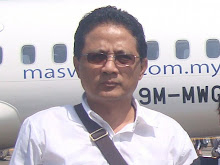Vikram Nehru, Washington, DC | Tue, 11/01/2011 8:56 PM A | A | A | - K;lipping the Jakarta Post
President Barack Obama’s November itinerary includes three idyllic seaside locations — Cannes, Honolulu and Bali. But he will have little time to enjoy the scenery. The trip across the Atlantic to Cannes for the G20 meeting will no doubt focus on the vicissitudes of a hobbled eurozone and the need for global coordination to avoid a double dip recession.
In sharp contrast, his trip across the Pacific will be to engage with a robust and resurgent East Asia and his meetings there will probably prove more important for the long-term economic and security concerns of the United States. They will be an important milestone in the Obama Administration’s steady and determined effort to reestablish a diplomatic presence and develop closer ties with a region that is driving the world economy and unsettling the established global balance of power.
The first stop on the president’s Pacific itinerary will be Honolulu for the APEC Economic Leader’s Meeting at which the United States will chair discussions on trade, regulatory convergence, and green growth. At the East Asia Summit (EAS) in Bali the agenda is likely to include maritime security, a broad enough rubric permitting discussion of simmering tensions in the South China Sea.
Both meetings have taken on added significance for two reasons — first, Obama’s personal involvement signals America’s seriousness in strengthening its Asian presence, challenging China’s preeminent role in the region, and providing an alternative point of reference to ASEAN countries; and second, this will be the first time that the United States (and Russia) have been included as members of the EAS, a development resisted by China but encouraged by key ASEAN members seeking to counterbalance China’s growing role in the region and its recent muscular projection of power, particularly in the South China Sea.
From ASEAN’s perspective, there are several reasons why it welcomes the reengagement of the United States in the region.
First, the United States continues to project an important military presence in the region, offering some measure of comfort against China’s growing regional clout.
Second, the United States may be suffering its worst economic crisis since the Great Depression, but it remains the world’s largest market, an important final destination for much of the region’s exports, and a key source of foreign direct investment.
Third, the recent ratification of the US-Korea free trade agreement potentially opens the door for either a similar free trade agreement with ASEAN or a broader APEC-wide free trade area for Asia and the Pacific — an arrangement that would serve the interests of the region as well as the United States.
And fourth, the presence of the US in regional forums such as APEC and EAS could potentially transform them into decision-making bodies rather than just “talking shops”.
But recent developments also give ASEAN reason to doubt US commitment toward the region. The US Senate’s recent passage of the Currency Exchange Rate Oversight Reform Act is designed to punish China for alleged currency manipulation but if it becomes law, it will hurt Southeast Asian economies that are part of the East Asian production chain in which China is the final link.
Second, America’s crippling fiscal problems, the seeming inability of Washington to take decisive action, and a politically weakened President Obama, stand in stark contrast to the strength of the Chinese economy, the relatively smooth manner in which China’s leadership transition in 2012 is being engineered, and the government’s impressive ability to take collective action when necessary.
While President Obama will be welcomed in Bali, the staying power of the US in the region is being questioned, especially when juxtaposed with China’s seemingly unstoppable ascendancy. Will the US have the fiscal strength to increase its presence in the Pacific to match China?
These concerns leave ASEAN countries in a difficult situation. Their economic future is inextricably linked to China. ASEAN’s ambition to develop a free trade area by 2015 and build an infrastructure network to facilitate intra-regional trade is supportive of a broader East Asian regionalism in which China is an integral part.
At the same time, several ASEAN countries are uncomfortable with China’s rise as a military power and the dispute over the Spratly Islands is only one of several security issues that cloud the future — and where the security presence of the US brings some comfort.
The region is transitioning to a new balance of power in which equilibrium is yet to be established. Searching for that equilibrium will require constructive engagement from all sides — especially that of China and the US. The November APEC and EAS meetings are significant milestones in that long road ahead.
The writer is a senior associate for the Asia Program at the Carnegie Endowment.
Subscribe to:
Post Comments (Atom)

No comments:
Post a Comment